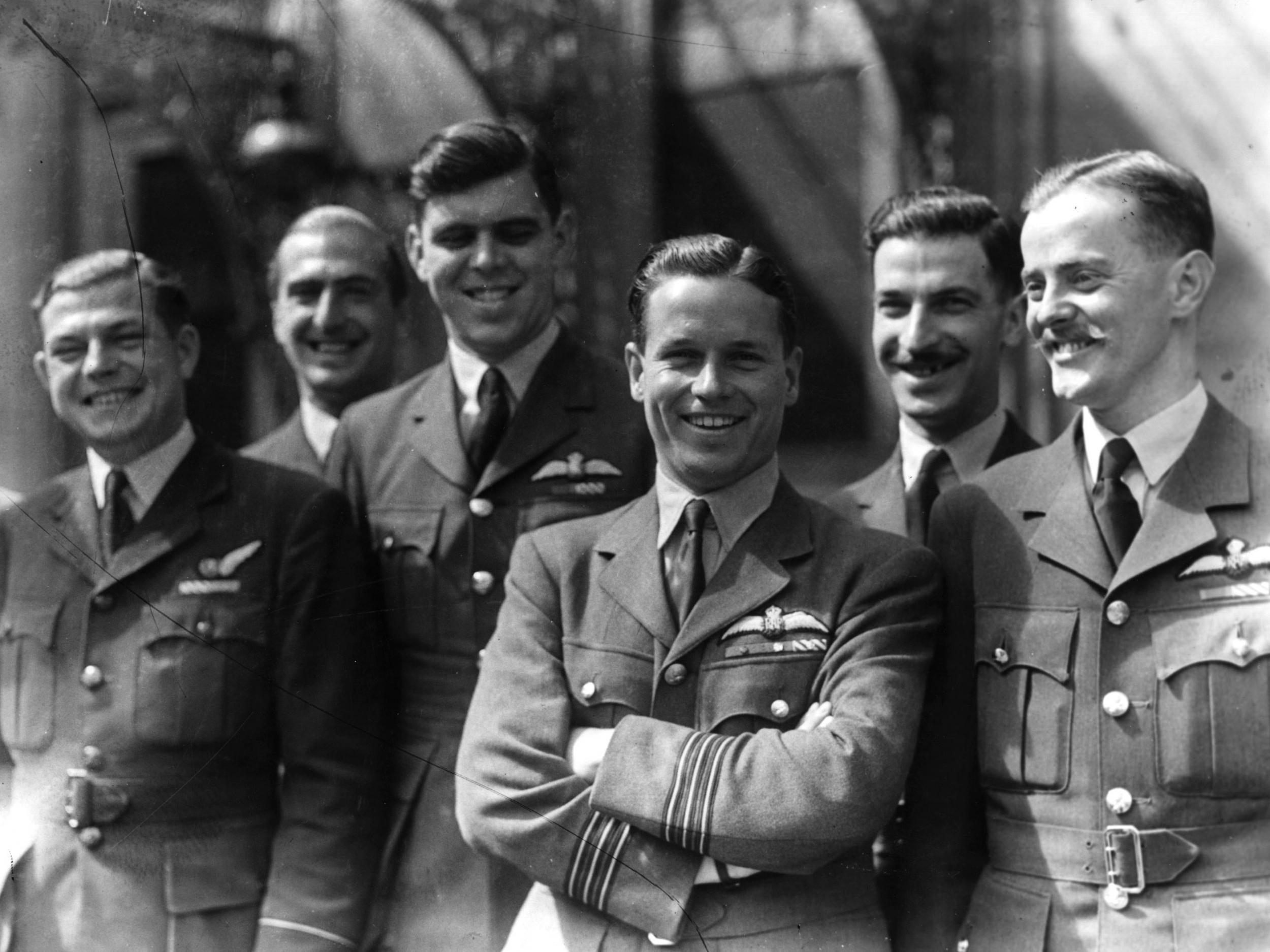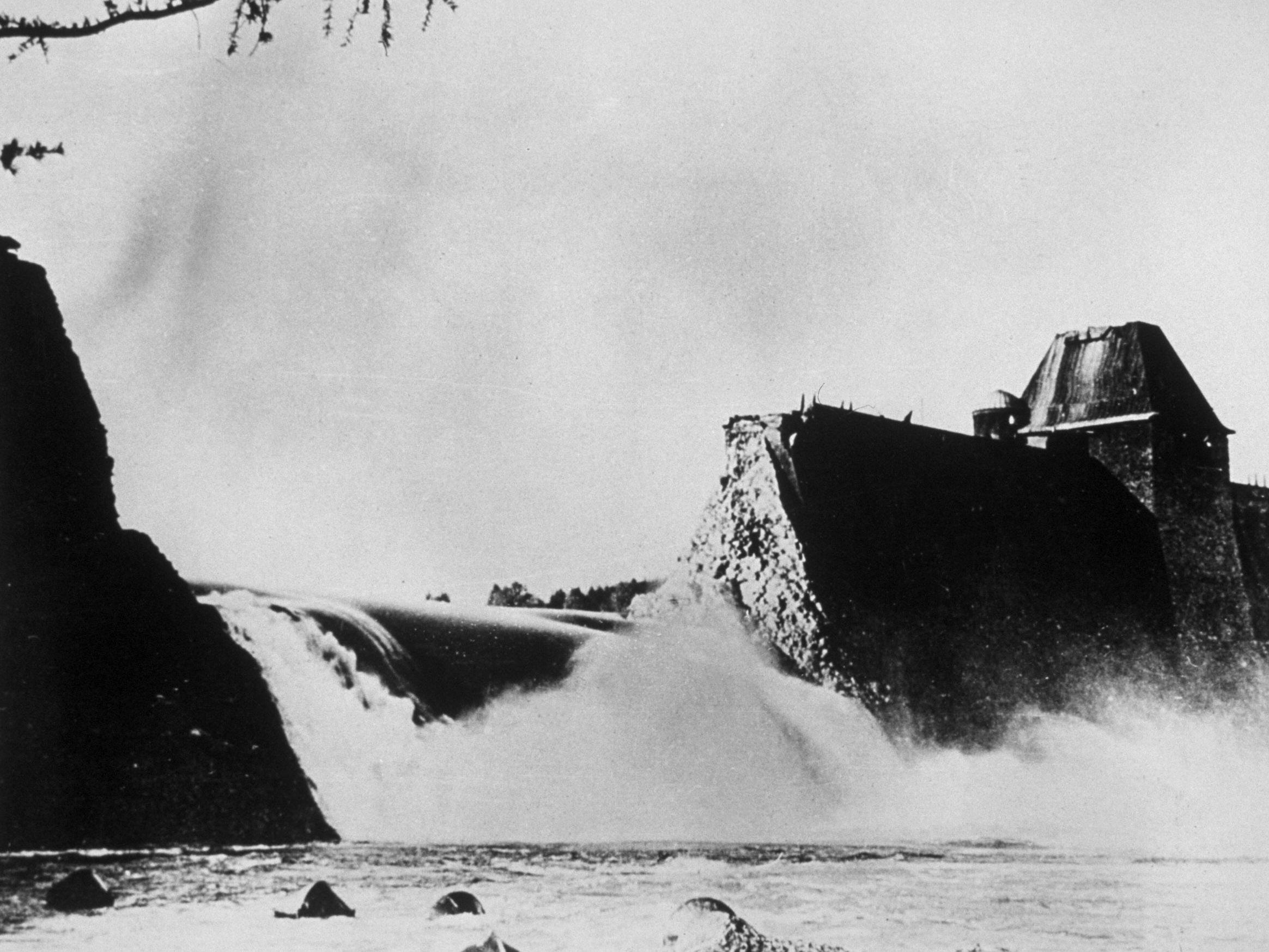The Dambusters 75 years on: How marbles inspired the Second World War's most daring bombing raid
Heroism of 617 Squadron and ingenuity of Barnes Wallis remembered on anniversary of one of Britain’s greatest wartime triumphs
Your support helps us to tell the story
From reproductive rights to climate change to Big Tech, The Independent is on the ground when the story is developing. Whether it's investigating the financials of Elon Musk's pro-Trump PAC or producing our latest documentary, 'The A Word', which shines a light on the American women fighting for reproductive rights, we know how important it is to parse out the facts from the messaging.
At such a critical moment in US history, we need reporters on the ground. Your donation allows us to keep sending journalists to speak to both sides of the story.
The Independent is trusted by Americans across the entire political spectrum. And unlike many other quality news outlets, we choose not to lock Americans out of our reporting and analysis with paywalls. We believe quality journalism should be available to everyone, paid for by those who can afford it.
Your support makes all the difference.This week marks the 75th anniversary of Operation Chastise, in which the Royal Air Force (RAF) secured a crucial victory at the height of the Second World War by dropping Barnes Wallis’s “bouncing bomb” on German dams.
The 19 Lancaster bombers of 617 Squadron, led by Wing Commander Guy Gibson, took out both the Mohne and Edersee dams to flood the Ruhr valley in North Rhine-Westphalia, Germany’s industrial heartland, destroying two hydroelectric power plants and damaging 125 armaments factories and several coal mines vital to the Nazi war effort.
Fifty-three British airmen lost their lives in the eight planes that were shot down or crashed during the surprise attack on the night of 16 May 1943, while approximately 1,600 civilians were killed – Allied prisoners of war and forced labourers among them. One of the targets, the Sorpe dam, sustained only a minor hit. The events of that night are nevertheless celebrated as one of the pivotal triumphs of the conflict.
Wallis’s innovation and the Lancaster’s huge bomb bay meant 9,000lb explosives could be skimmed along the surface of the river, to evade the submerged torpedo nets that guarded against underwater attacks as they spun en route to their target. The idea was derived from skipping marbles across a tub of still water in the inventor’s back garden in Surrey.
Tested on models in Watford and then on the disused Nant-y-Gro dam in Wales and at Chesil Beach in Dorset, Wallis’s idea encountered opposition from Ministry of Aircraft Production personnel who thought it too madcap and improbable to work before finally before being given the go-ahead by Air Chief Marshall Charles Portal, impressed by the trials.

Gibson, just 24 but an experienced night-flyer and veteran of 170 bombing raids, was chosen to head the new squadron, especially formed for the job out of RAF Scampton north of Lincoln. The group, comprised of crew from Britain, Canada, Australia, New Zealand and the US, would fly Avro Lancaster Mk IIIs, stripped of their internal armour and mid-upper turret to minimise weight and accommodate their heavy cargo.
Gibson drilled his men in low-altitude flying so that they could drop the drum-shaped “Upkeep” bombs from just 60ft above the surface of the Ruhr at speeds of 232mph, practising over reservoirs in Rutland and Colchester.
The squadron’s aircraft were divided into three formations and set out from Scampton, reaching Germany via the Netherlands.
Gibson flew in the first wave and attacked the Mohne shortly after midnight, but it took five bomb launches before the dam was breached at 12.28am. The Eder collapsed in the second wave of bombings at 1.52am, but the earthen Sorpe stood fast.
The bombing caused the dams to spill some 330m tonnes of water over a large area, disabling mines, roads and railway bridges. The 5,100kw power stations represented a major loss to German industry while damage to the mine shafts resulted in a 400,000-tonne drop in coal production. Thousands of acres of arable land intended for farming were also lost. “I feel a blow has been struck at Germany from which she cannot recover for several years,” Barnes Wallis wrote.
Dr Nick Hayes, an expert from Nottingham Trent University, says that in a time of “total war” the targeting of the enemy’s production capabilities is a key part of the war effort.
Despite Sir Arthur “Bomber” Harris of RAF Bomber Command having later dismissed the raid as not “worthwhile except as a spectacular operation”, Hayes says the immediate industrial impact was “considerable”.

He adds: “Munitions production in the Rhur [comes] almost to a standstill, and transport infrastructure is severely affected.
“Initial reaction from the Nazi leadership labels the impact of the raid as being ‘catastrophic’. Yet the impact is short-lived. Within a fortnight production levels are back to pre-raid levels, with water supply to industry being restored.
“However, you can argue that this is because the Germans had to transfer a huge resource to make this happen, labour that could have been used elsewhere. It’s argued, for example, that one consequence was that coastal defences in France were not completed.”
The real value of the Dambusters raid arguably lay in the lift it gave to British morale. “Without doubt, it was a publicity coup,” Hayes says. “The story is carried as a major headline in national and provincial papers across Britain hailing the achievement in exaggerated language, but this is hardly surprising.
“Photos showing the damage are made available, as is info on Gibson. It is a classic ‘good news story’.”
Nonetheless, Hayes adds: “The costs in aircrew lives and economic resources were very high, and the results mixed”.
Craig Murray, a curator at the Imperial War Museum’s Duxford centre, says the wider impact – on agriculture, German front-line resources, prisoner-of-war morale and Britain’s reputation with then-ally Joseph Stalin – cannot be written off.
“It creates a psychological effect [in] the German military which draws a lot of manpower from other things to defend dams in case it happens again,” he says. “Essentially it was denying the German front line a division of infantry.”
“The Soviets were very impressed,” he adds. “We were putting our money where our mouth was. It was very important that we could reassure the Soviets that we were keeping our end up.”
Significant materiel was also diverted, he says.
In Britain, the press reported the episode in florid and highly emotive language and employed no small measure of biblical water-based metaphor, Murray says. It also “played well in the States”, he adds, with The New York Times making a special mention of it.
Like Dunkirk, the attack has since been cherished as an example of British pluck at its best, remembered as an agreeably unlikely partnership between a boffin visionary and a dashing daredevil pilot ready to make the ultimate sacrifice to win the day.
The men of 617 Squadron became celebrities and would be hailed as heroes for the rest of their lives. Gibson was awarded the Victoria Cross and the group served the remainder of the war as a specialist precision bombing unit, testing experimental new devices including Barnes Wallis’ Tallboy and Grand Slam “earthquake bombs”.

The operation’s legend was set in stone with the release of Michael Anderson’s classic film in 1955, starring Sir Michael Redgrave as Wallis and Richard Todd as Gibson. Based on the latter’s memoir Enemy Coast Ahead and Paul Brickhill’s history The Dam Busters, this mainstay of bank holiday broadcasting dramatises Wallis’ battle to overcome British Air Ministry doubts, and his own, about the possibility of realising his fantastical innovation.
Hayes says The Dam Busters was one of “a plethora of British war films made in the 1950s” commemorating the conflict “as a high point, a time when the nation came [together], where we stood alone for much of the time”.
He adds: “The postwar world, initially at least, is one of austerity and decline. It’s been suggested also that the films made in the 1950s celebrate officer heroism and leadership at a time when middle-class economic and social leadership is being questioned.
“One of the things I find interesting about The Dam Busters is the portrayal of Wallis as a lone, eccentric inventor, battling against bureaucracy, which is a significant distortion but it melds well with certain key British imagined national characteristics.
“We remember the war now in many ways through those black-and-white movies made in the 1950s – The Cruel Sea, The Colditz Story, Reach for the Sky.”
The Avro Lancaster itself, the strategic behemoth born from the Manchester medium bomber’s 1930s-era DNA, also became a legend in its own right thanks partly to the film.
One is still operated as part of the Battle of Britain memorial flight alongside six Spitfire fighters, two Hurricanes and other aircraft.
The raid and film also burnished the image of Bomber Command, Murray says, portraying a “cleaner image, if you will” than the carpet-bombing of German cities in which Harris’ crews also engaged.
Aside from an accomplished piece of patriotic filmmaking, Anderson’s wartime caper gave Britain one of its most stirring anthems in the form of “The Dam Busters March”.
Composed by Eric Coates – also responsible for “By the Sleepy Lagoon”, another staple of Britain’s sonic landscape since it was first used to introduce Roy Plomley’s Desert Island Discs on the BBC Forces Programme in 1942 – the signature march has been a national earworm ever since, shorthand for British military glory played at everything from air shows to England football matches and the Last Night of the Proms.
A new chapter in the myth of British derring-do was written.

Join our commenting forum
Join thought-provoking conversations, follow other Independent readers and see their replies
Comments